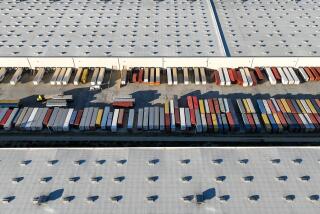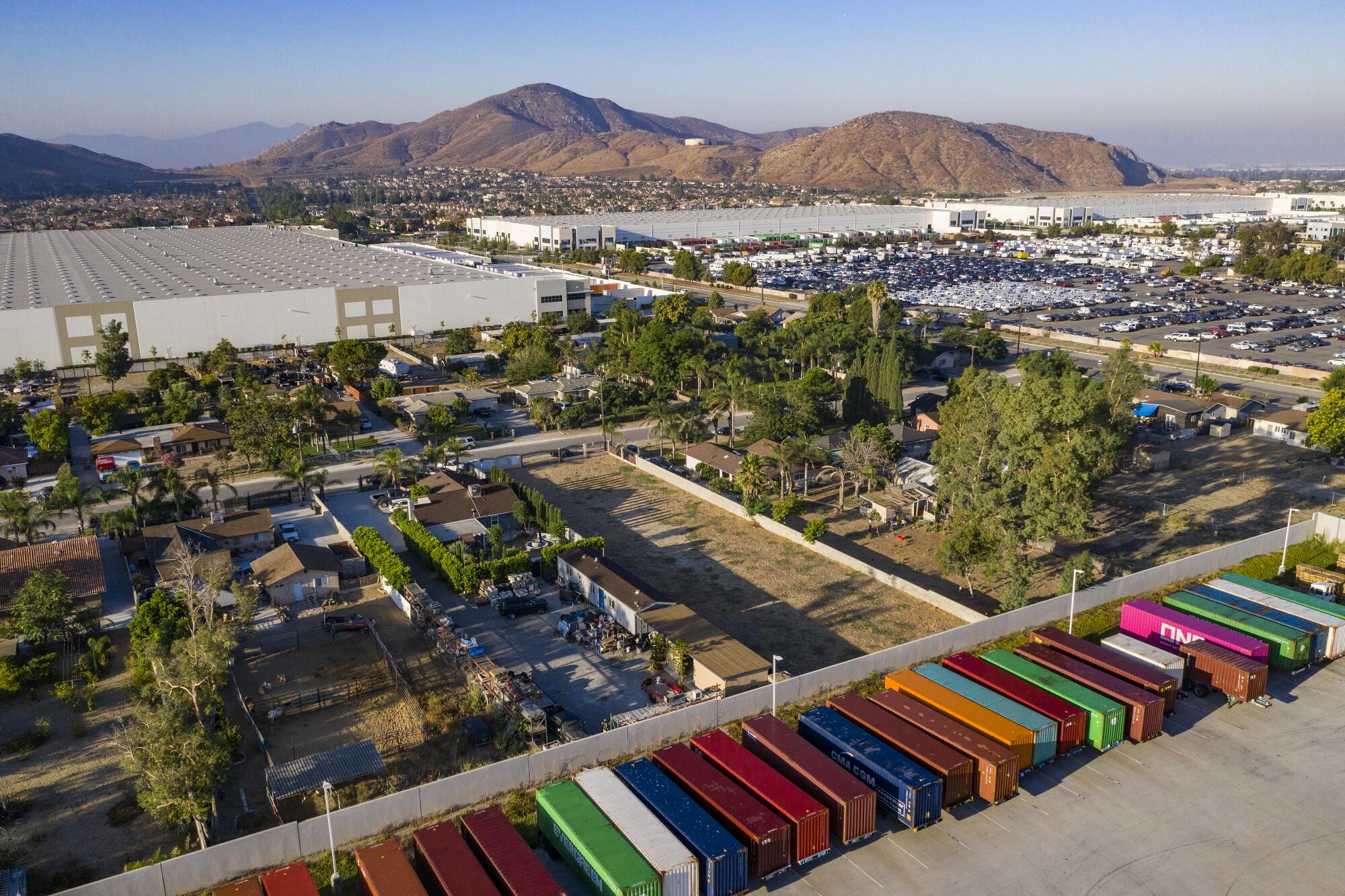
- Share via
Standing under an aging pavilion in the backyard of the home she’s lived in for 54 years, Mary Anita Valdepeña let out a deep sigh and said she’d rather not be there. “It’s too depressing,” she said.
Her family used to gather in the yard to celebrate birthdays and holidays, under the shade of the mulberry trees her husband planted, the rounded peak of Mt. Baldy in the background.
These days, the yard is overgrown with dandelions, the mulberries are dying and her view is the towering concrete wall of a warehouse. A line of semi truck trailers is parked nearby against another, shorter, concrete wall at her property line. And from where she stands, there’s a constant hum — a truck rumbles, tires squeak, a forklift beeps, metal hits metal.
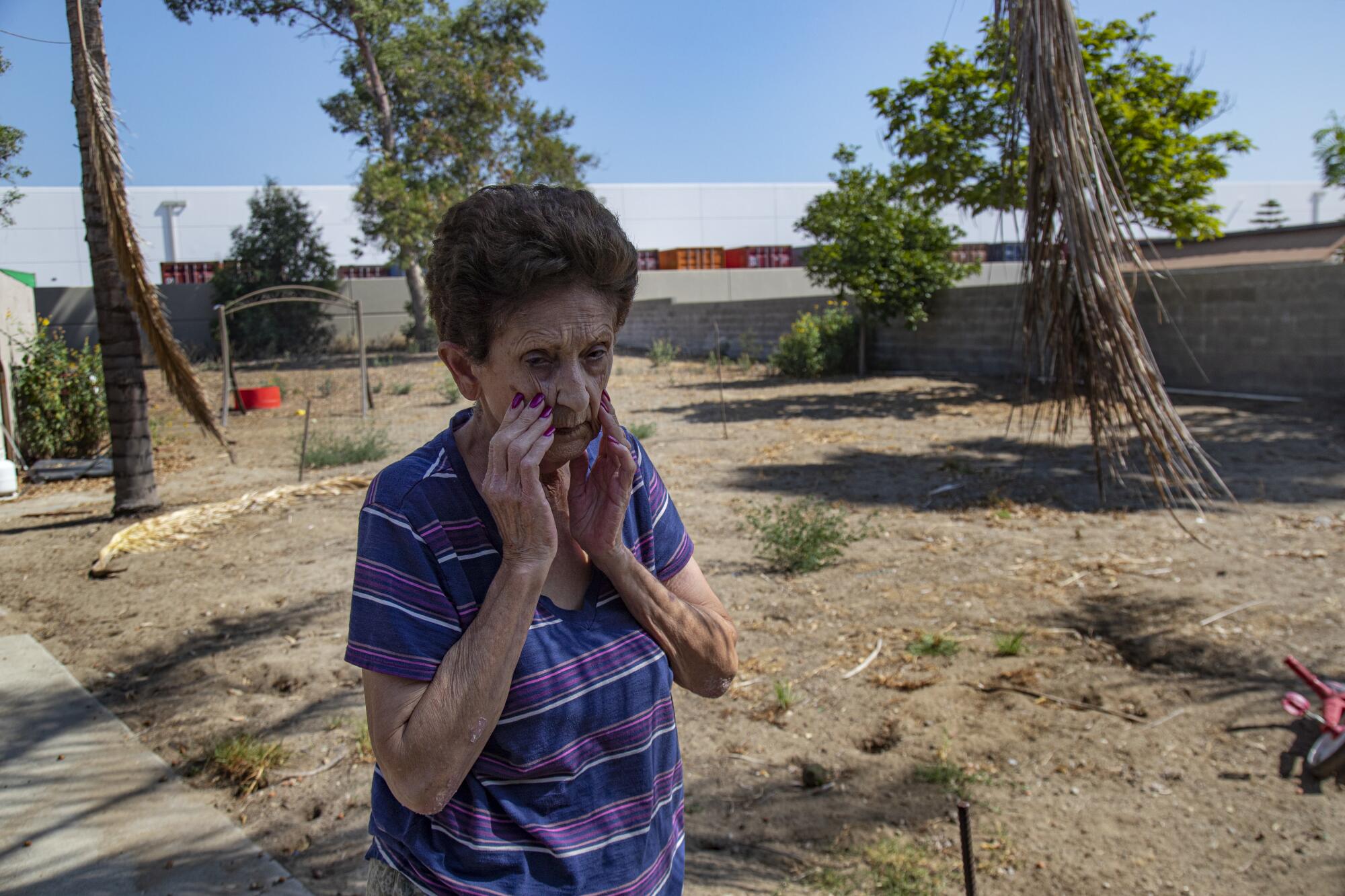
Valdepeña, 79, said she doesn’t go outside unless she has to, or even open the windows. Doing so lets in the smell of fumes from idling engines and the sounds of trucks docking and unloading late into the night.
“You want to know about the warehouses? They ruined my life,” she said.
The noise, the air pollution and the trucks are a daily reality for the dozens of working-class, mostly Latino residents of Rose Avenue in south Fontana. They have been surrounded by warehouses in the last five years as the Inland Empire has been transformed into a national logistics hub, with local officials jockeying to roll out the red carpet for the industry.
The warehouses have brought thousands of jobs to a place where residents have often struggled with high unemployment and long commutes. Their proliferation makes it possible for Southern Californians to buy something online and have it arrive at their doors within hours.
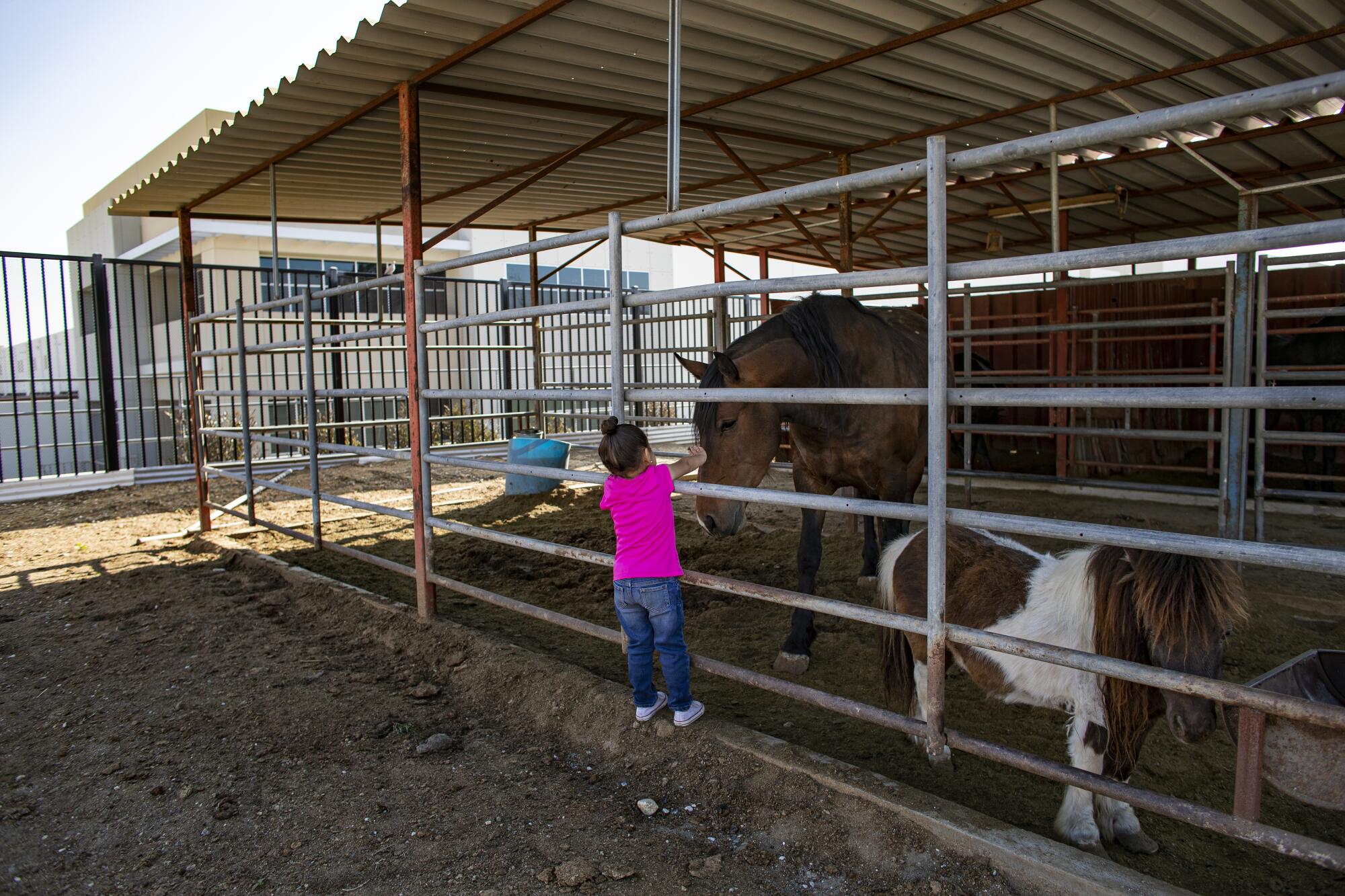
But the industrial boom has brought warehouse projects closer to homes, despite health warnings from state air quality officials, who recommend against housing people within 1,000 feet of such facilities because of harmful truck pollution.
In Fontana, where Mayor Acquanetta Warren prides herself on being nicknamed “Warehouse Warren,” developers have dramatically reshaped the city, buying dozens of single-family homes, horse properties, chicken ranches and other small businesses and tearing them down to build millions of square feet of distribution centers for Amazon, UPS and others.
Developers offered to buy Valdepeña’s home and those of her neighbors, but they refused to sell, and the warehouses went up around them. In Valdepeña’s case, one warehouse’s perimeter wall is right at her property line, 150 feet from her back window.
“Boxed. We’re boxed in from either direction,” said Josie Kuhl, 64, who has lived on Rose Avenue for 30 years. “We hear the forklifts at night. The rumbling of trucks when they’re docking, it’s just nonstop.”
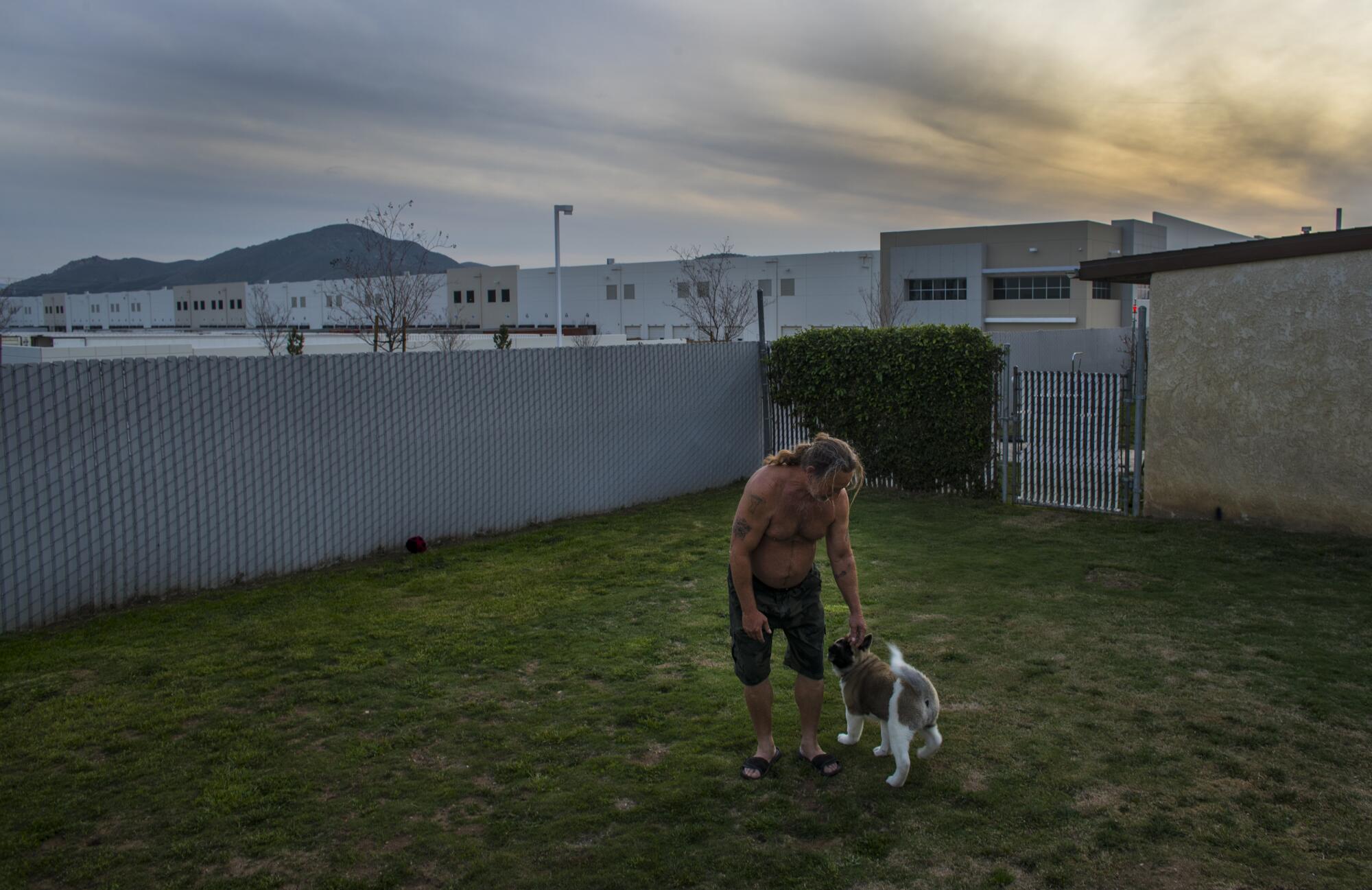
Through the decades, Fontana has undergone continual reinvention — from the small town that drew Angelenos east with the promise of a more rural life, to one of the largest steel producers in the nation during World War II, to a working-class bedroom community for L.A. and Orange counties.
The warehouses, as Warren sees it, will once again remake Fontana: from a community whose residents face arduous commutes into a city where they just cross the street to get to work.
Warren was born in Compton and left in 1993, the year after jurors acquitted LAPD officers in the beating of Rodney King, sending angry residents into the streets.
“My kids, I had to get them out of there,” she said.
She took a job with the city of Upland and settled in Fontana, where she said she was drawn to the trees, the parks and the family-oriented community.
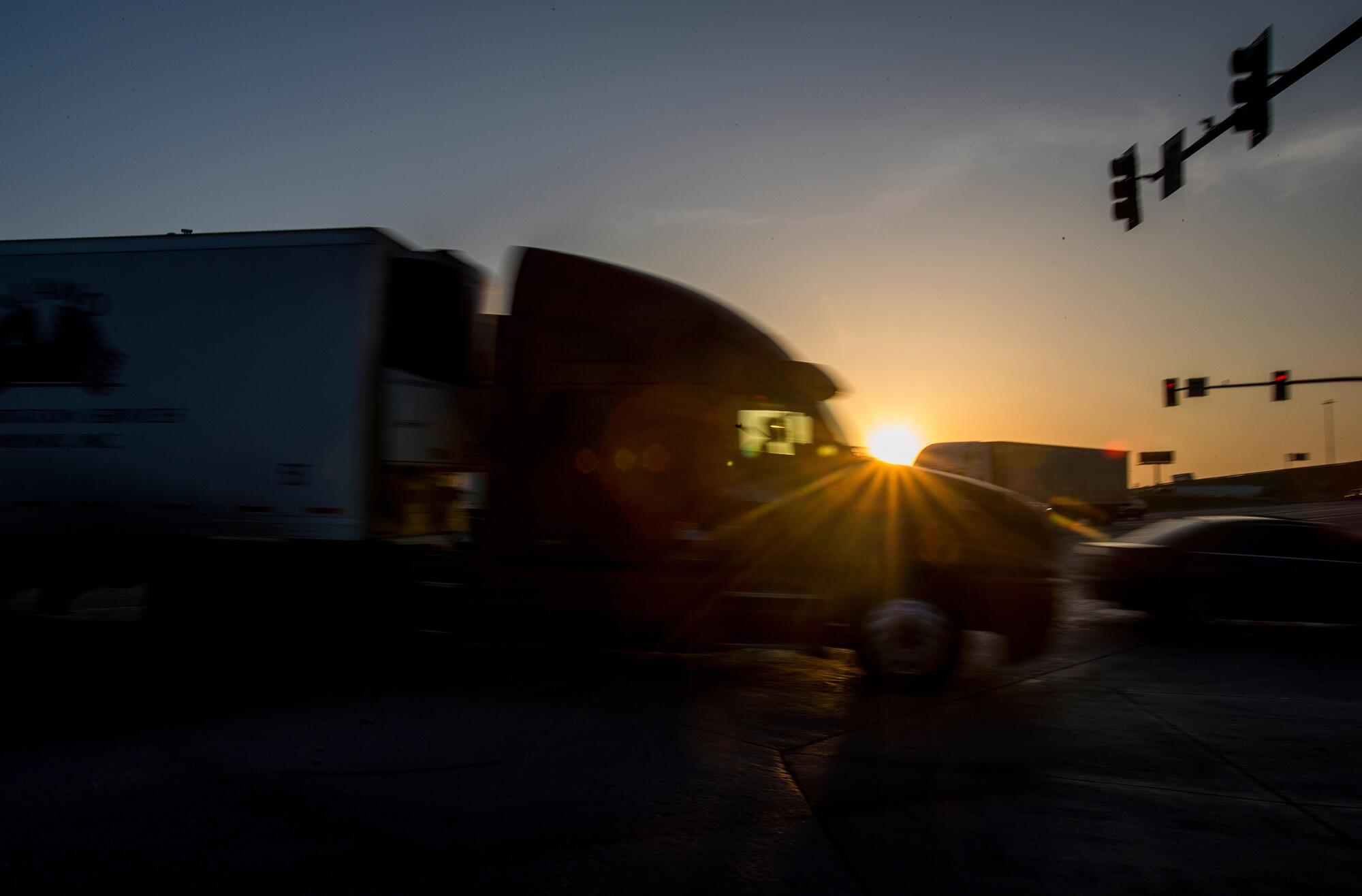
In 2011, the year after she became mayor, Warren was invited to her first ribbon-cutting, a grand opening of Anna’s Linens. She thought she was going to a retail store, she said. It wasn’t until she arrived that she realized it was a massive warehouse.
The company’s CEO pulled her aside and described the extent to which distributors were already quietly settling in her town, she recalled.
“He told me, ‘We’re moving product and distributing throughout the United States right here in Fontana,’” Warren said. “I had goosebumps when I left there. I think I’m onto something.”
She went to the Chamber of Commerce and to City Council members and started looking for ways to make Fontana accommodating to warehouse development, she said.
Warren faced a recall effort in 2017 over what her critics called “reckless residential and warehouse development.” They criticized her for taking large amounts of campaign money from developers, but the mayor remains popular and undeterred.

“They started calling me ‘Warehouse Warren,’ and at first I was like, ‘Wow, they’re killing our jobs here.’ But then I said, ‘You know what, I like that name.’ And I started going with it,” Warren said. “People tell me, ‘I used to be on the freeway two hours going to Orange County,’ and now they go home for lunch.”
During a driving tour of the city, she pointed out the Sierra Lakes Commerce Center, a new nearly 600,000-square-foot warehouse project on the city’s north side.
“Look how beautiful, right across from the housing,” she said, waving at a large tract across the street.
She later directed the driver to Jurupa Avenue, a major road in south Fontana.
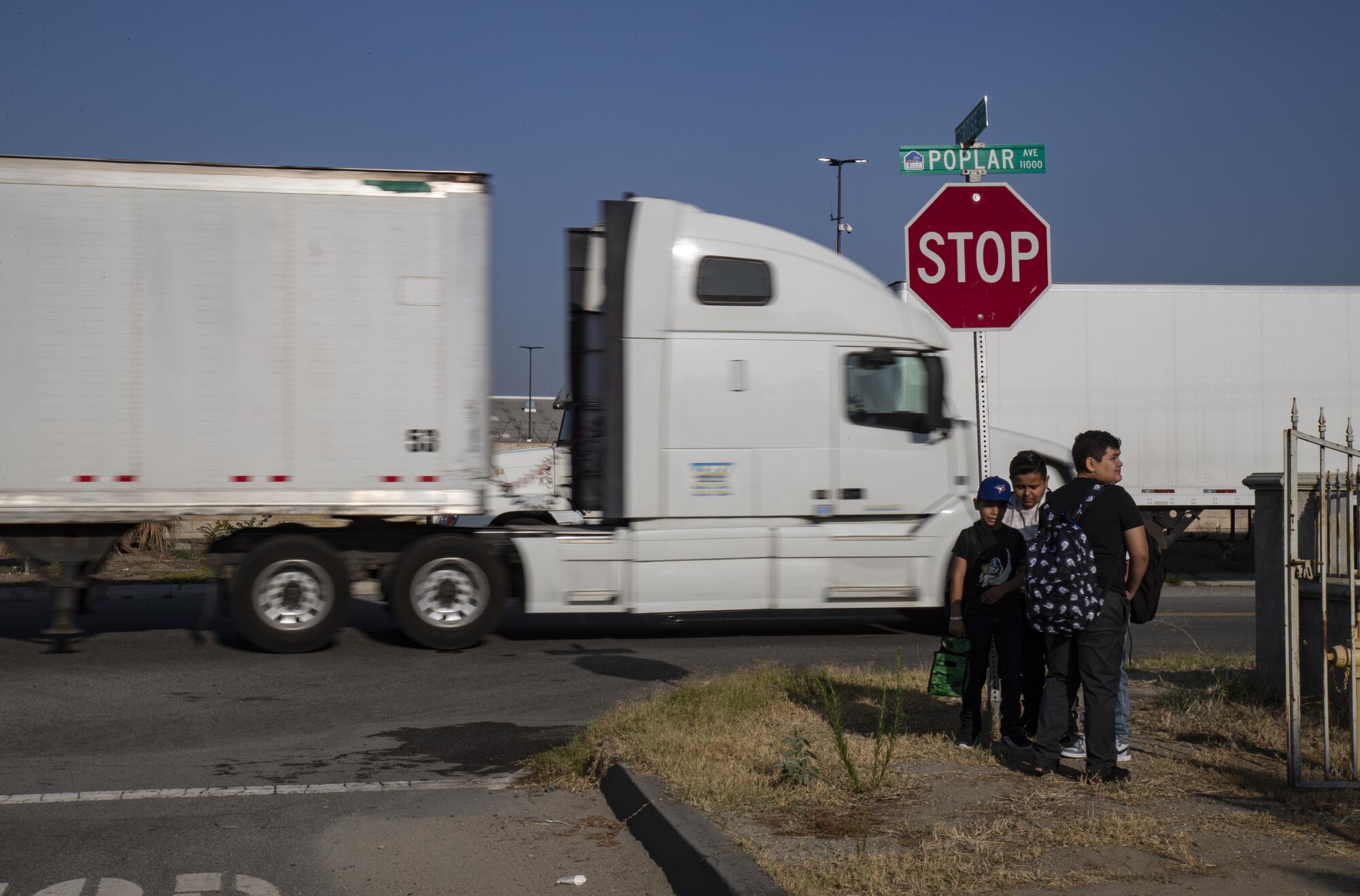
“It used to be when people would come here, all of this was a hot mess. One night, a goat ran out in front of my car,” Warren said. “Now … look how clean it is.”
The north side of the street was a line of new warehouses. On the south side was a tract with hundreds of single-family homes.
Tucked behind one warehouse, invisible from the street, were the about three dozen homes in the Rose Avenue neighborhood. Just down the street, about half a dozen boarded-up homes sat behind a chain link fence.
A sign on the fence announced that three warehouses, totaling 1.1 million square feet, would soon be put in their place. Nearby was St. Mary Catholic Church, where officials said they too had been approached by developers wanting to buy the property. They turned down the offer.
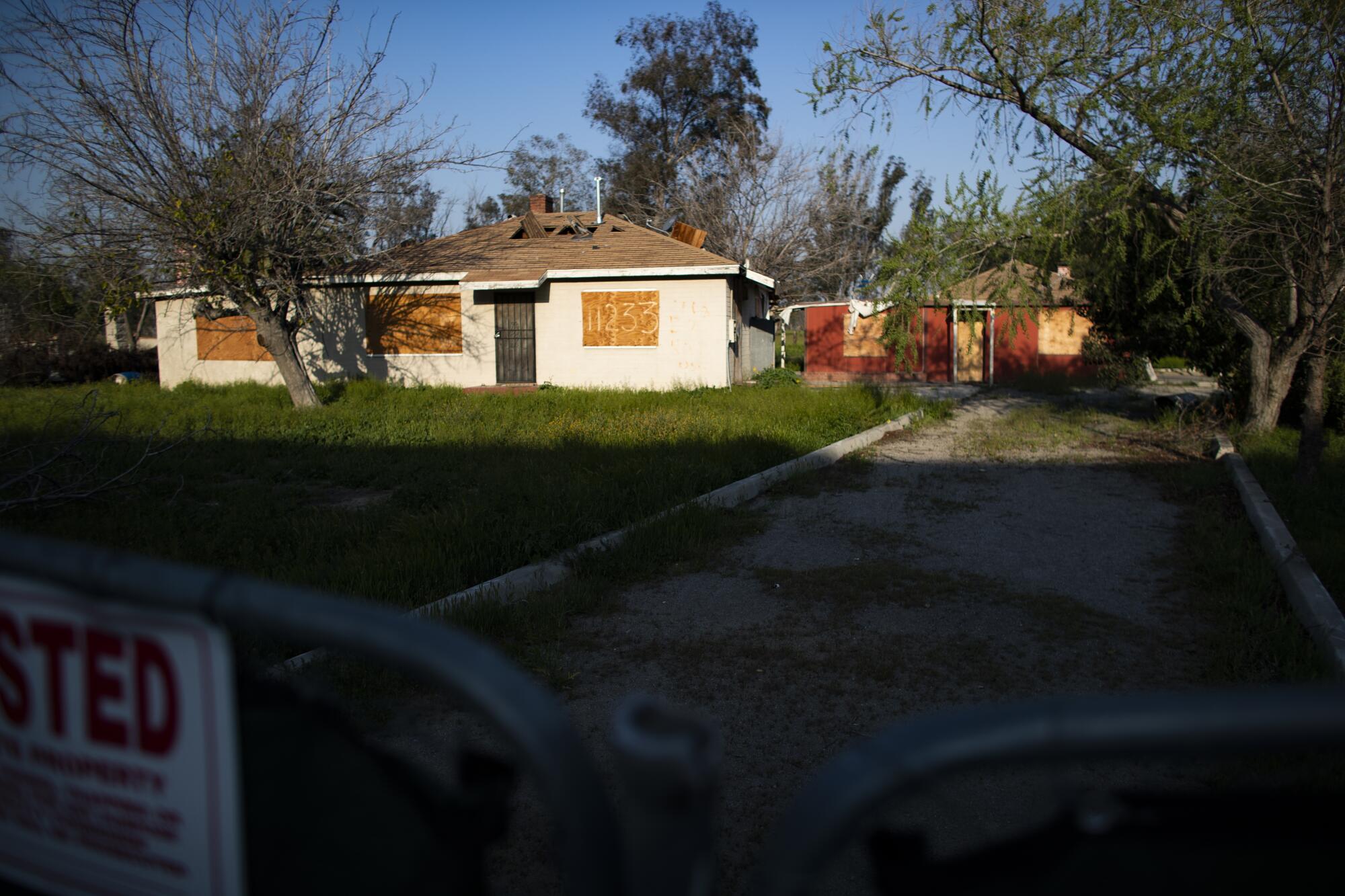
In the last decade, more than 150 million square feet of industrial space, the vast majority of it warehouses, has been built in the Inland Empire, according to real estate services company CBRE.
In that time, about 54 warehouses have been built or are under construction in Fontana, totaling about 16 million square feet, and about 100 homes have been sold and demolished to make way for those projects, city officials said.
Warren acknowledged that there had been some “growing pains” related to development — but she dismissed most criticism. The city follows state and federal law when it comes to these projects, she said. And air pollution, she said, gets swept away by wind.
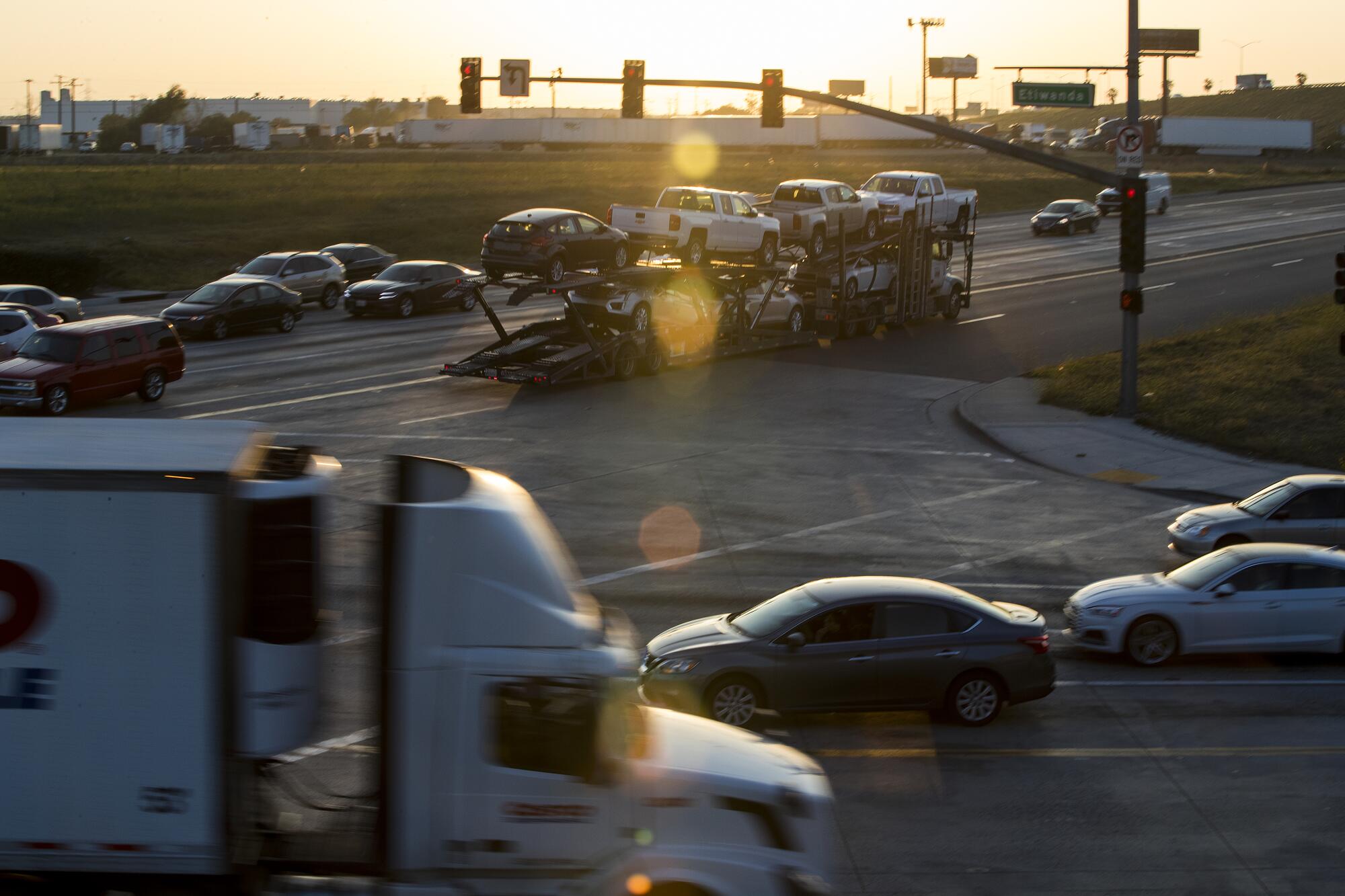
Residents complaining about things like truck traffic should consider their own shopping habits, she said.
“People keep ordering stuff, and then they wonder why you need trucks and movement and all that. It’s hilarious. Quit ordering stuff, you know?” she said.
*
Valdepeña has witnessed Fontana’s reinventions first-hand. Her husband worked for Kaiser Steel for 25 years, until the mills closed down in the 1980s. He got a pension and healthcare benefits that helped sustain her family for years, she said.
These days, her son works in warehouses through a temp agency.
“They work them for three months and then ... they don’t hire them,” she said.
In 1965, when Valdepeña and her husband built their home on Rose Avenue, the couple and their children were surrounded by empty fields, citrus groves and grapevines.
Over the years, they bought additional plots on the street and built homes for other family members. Then other residents began to build nearby, until Rose Avenue had dozens of homes.
Eventually, a juice-box packing company opened on the street’s west end. There were truck-storing businesses and a chicken ranch nearby, and some residents ran their own small businesses from their homes.
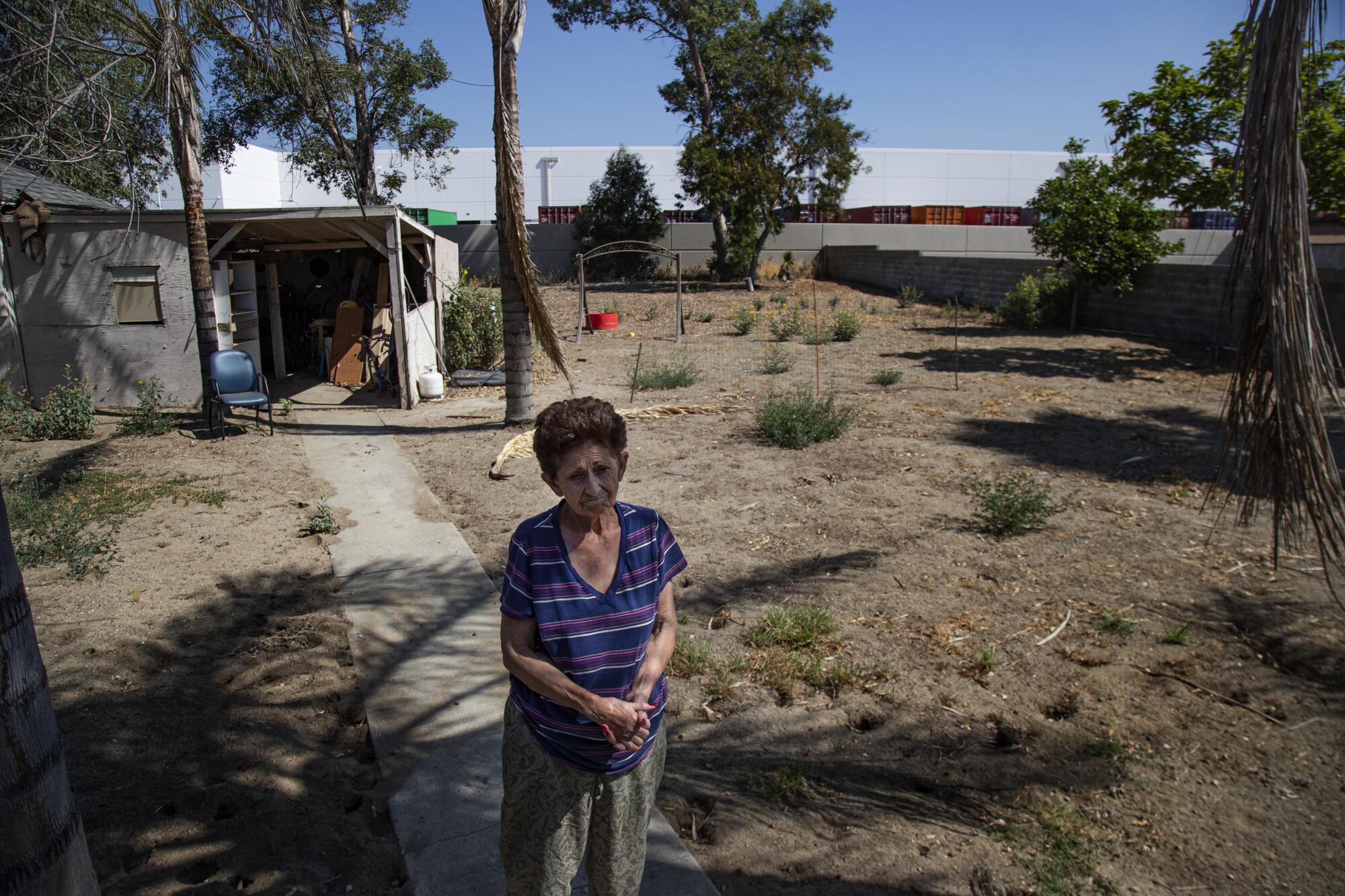
But the street has kept a rural feel. Most of the lots are about half an acre, with small single-story homes. Some families keep goats, chickens and horses out back.
A few years ago, developers invited the residents of Rose Avenue to a meeting at a park, Valdepeña and many of her neighbors recalled. They offered to buy their homes but said, for the deal to work, everyone had to agree.
“The majority didn’t want to sell because they were offering very little,” said Socorro Bogarin, 38.
Still, Bogarin said, she’s not troubled by the warehouses around her.
“I’m comfortable,” she said. “They can keep making warehouses, and I’ll stay.”
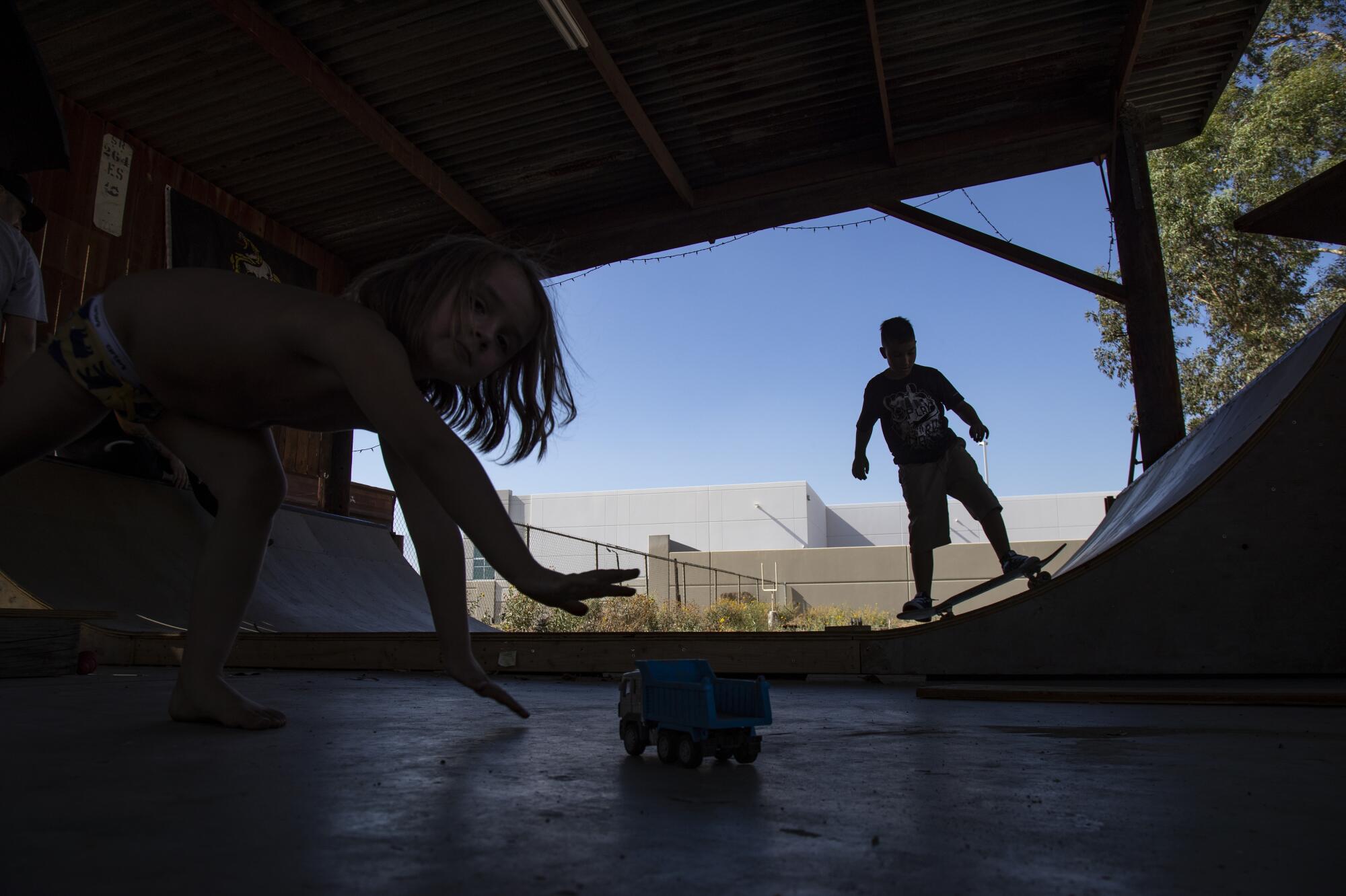
Bogarin pointed to a road she said was improved when the warehouses came and said she preferred knowing there were jobs to be had inside the massive buildings.
But some officials are starting to express concern about the proliferation of warehouses near homes without an adequate buffer.
Experts have long warned about elevated asthma and cancer risks near warehouse distribution centers and other freight hubs because of the pollution emitted by trucks — physicians have even labeled these places “diesel death zones.”
The state Air Resources Board recommended in 2005 that houses be at least 1,000 feet from warehouses, based on estimates that pollution concentrations drop by 80% at that distance.
“That 1,000-foot buffer is cited in many cities as a recommendation, as a mitigation measure, but unfortunately it’s not taken seriously,” said Andrea Vidaurre, a policy analyst with the Center for Community Action and Environmental Justice, a local advocacy group.
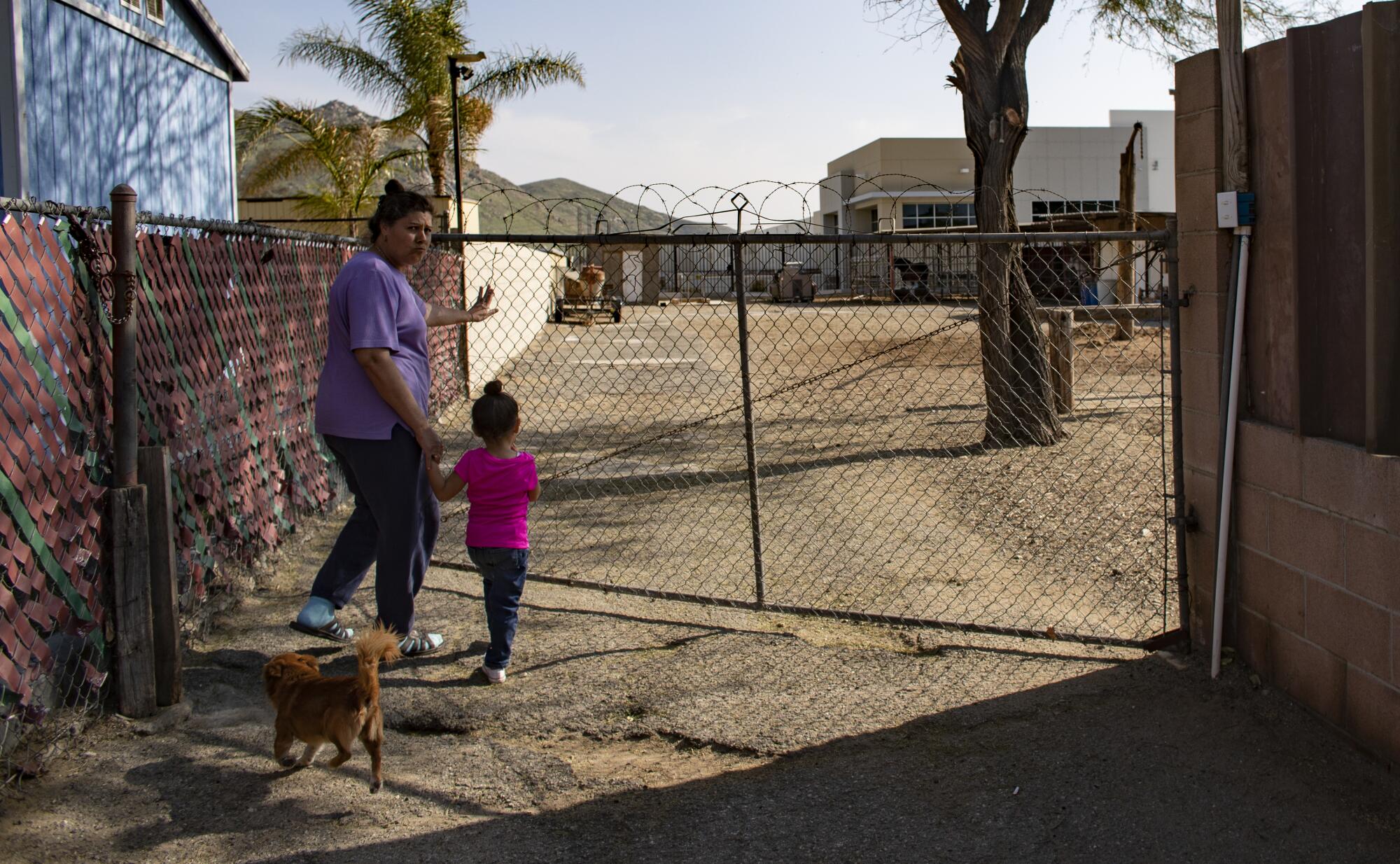
Diesel trucks have gotten cleaner in the decade since the state board made its recommendation. But warehouse projects are also getting bigger, often 500,000 square feet or larger.
In the last two years, city and county officials throughout the region have approved several major projects that would sit right next to homes — some 100 feet or less from property lines — despite sometimes heated opposition from activists and residents concerned about the effects of traffic, noise and pollution.
In early 2017, Riverside residents took to City Hall carrying signs that said: “No Megahouses next to our neighborhoods,” as officials approved a 1.4-million-square-foot warehouse project in the Sycamore Canyon Business Park, with one proposed building just 100 feet away from property lines in a neighborhood of tract homes.
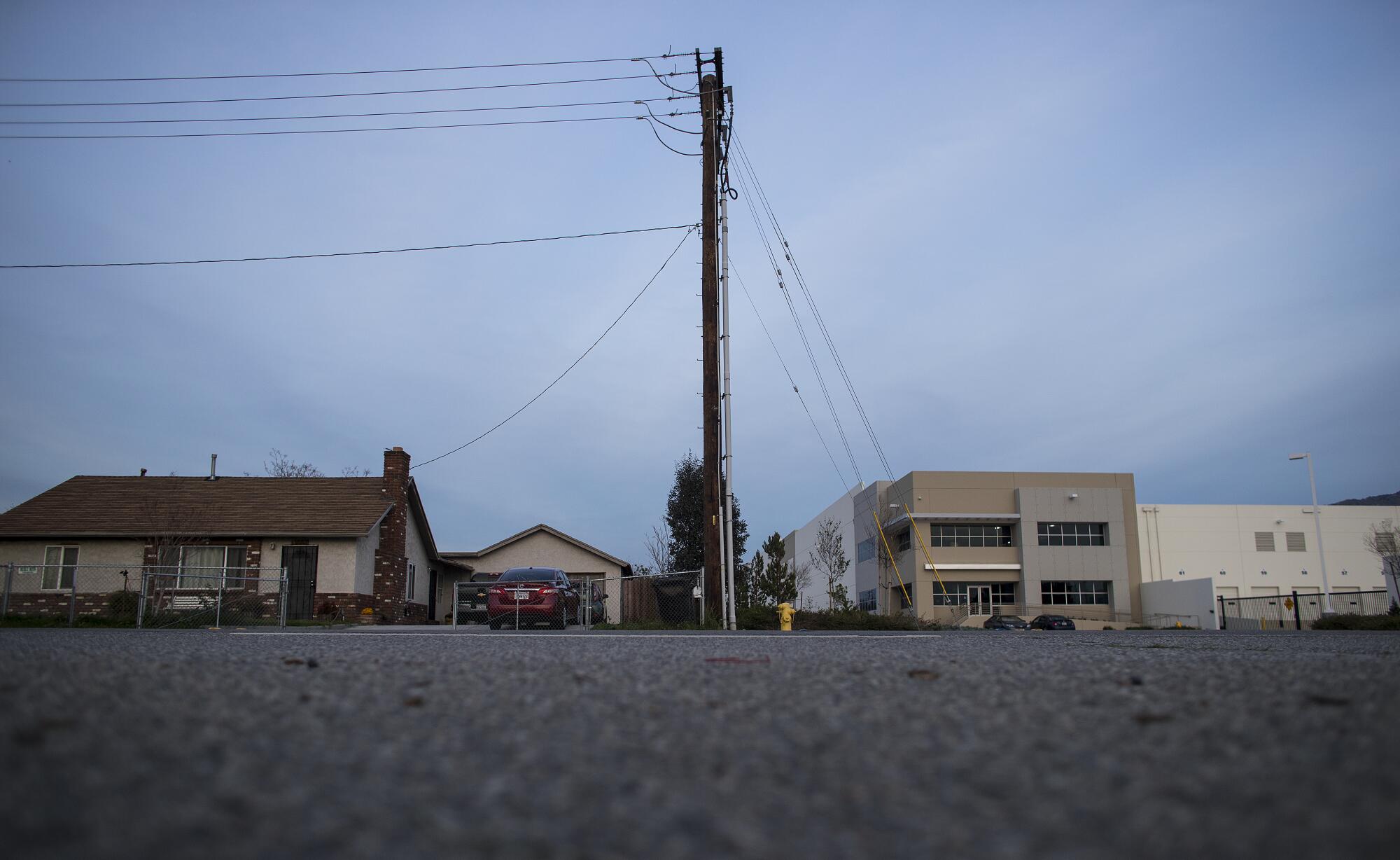
That summer, San Bernardino County supervisors approved a 680,000-square-foot warehouse in the unincorporated community of Bloomington, just 90 feet from some residential properties and 260 feet from an elementary school. Later, at a meeting in which they were confronted by dozens of angry residents and activists, they voted to rezone 17 acres of residential land for a 344,000-square-foot warehouse facility just 50 feet from some residents’ property lines.
And earlier this year, Fontana approved the West Valley Logistics Center, a proposed 3.4-million-square-foot warehouse project that would be bordered by a large neighborhood.
Residents and activists have pushed back against these projects, to little effect.
“I don’t think many of our groups are really stopping the warehouses. I think they have a plan and it doesn’t matter what the community says,” said Kim Rocha, a resident of Bloomington who organized for years to try to stop the proposed development there.
A few weeks ago, trucks arrived and began grading the land for the warehouse.
It will rise directly behind Rocha’s home.
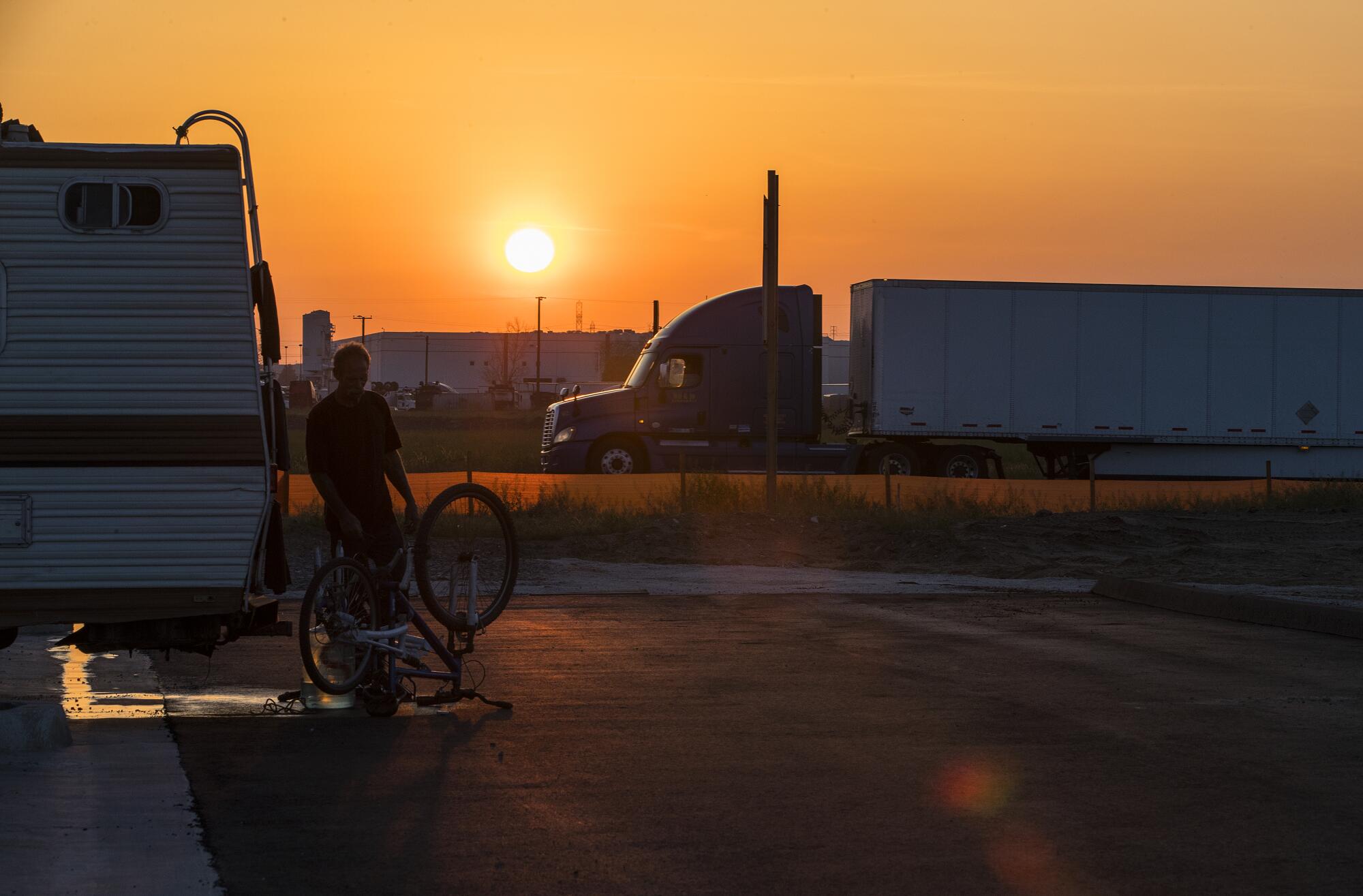
More to Read
Sign up for Essential California
The most important California stories and recommendations in your inbox every morning.
You may occasionally receive promotional content from the Los Angeles Times.


